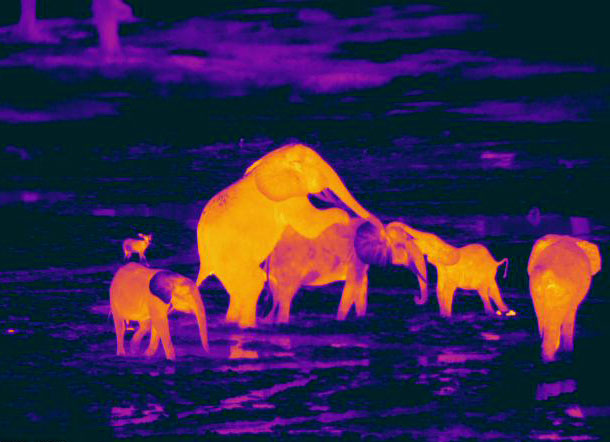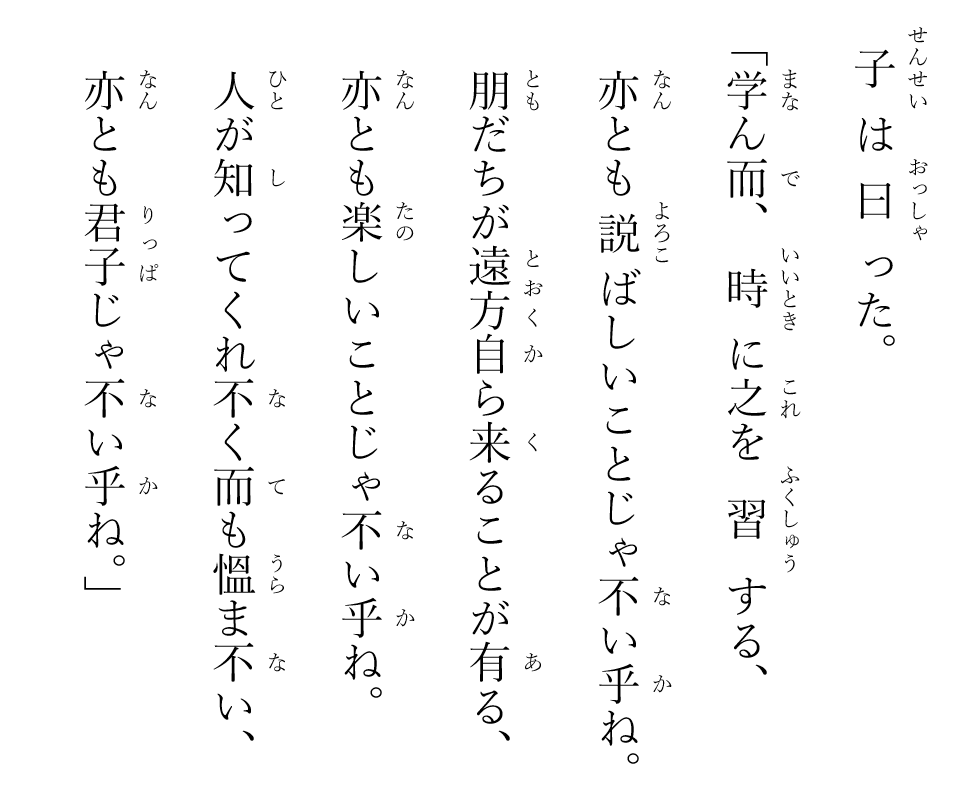Josef Stefan and his equation for infrared radiation
The fact that the thermoradiative wattage output per surface areapower flux of a hot object, \(q\), is proportional to 4th power of its temperature was deduced by a German physicist named Josef Stefan in 18791879 is quite eventful in physics because it was the year when Maxwell passed away and Rayleigh took over the Cavendish chair, it was also the year when Einstein was born. It was also the year when Karl Pearson took his Tripos exam and placed third Wrangler. Many years later when the 23-year-old Einstein started the Olympia group in 1902, his first reading suggestion was Pearson's The Grammar of Science.: $$q \propto T^4$$ Stefan's proportionality was inspired by a certain infrared emission
. . . 13a spiral of platinum wire suitably supported was placed within the camera of the electric lamp at the place usually occupied by the carbon points. This spiral was connected with a voltaic battery; and by varying the resistance to the current, it was possible to raise the spiral gradually from a state of darkness to an intense white heat. Raising it to a white heat in the first instance, the rock-salt train was placed in the path of its rays, and a brilliant spectrum was obtained. The pile was then moved into the region of obscure rays beyond the red of the spectrum. Altering nothing but the strength of the current, the spiral was reduced to darkness, and lowered in temperature till the deflection of the galvanometer fell to 1. Our quesion is, ‘What becomes of the waves which produce this deflection when new ones are introduced by augmenting the temperature of the spiral?'

14Causing the spiral to pass from this state of darkness through various degrees of incandescence, the following deflections were obtained.
| Appearance of spiral | Deflection by obscure rays |
|---|---|
| Dark | 1° |
| Dark | 6° |
| Faint red | 10.4° |
| Dull red | 12.5° |
| Red | 18° |
| Full red | 27.0° |
| Bright red | 44.4° |
| Nearly white | 54.3° |
| Full white | 60.0° |
15The deflection of 60° here obtained is equivalent to 122 of the first degrees of the galvanometer. Hence the intensity of the obscure rays in the case of the full white heat is 122 times that of the rays of the same refrangibility emitted by the dark spiral used at the commencement. Or, as the intensity is proportion to the square of the amplitude, the height of the aethereal waves which produced the last deflection was eleven times that of the waves which produced the first. The wavelength, of course, remained the same throughout . . .
There are several ways to estimate the intensity of the obscure rays from the deflection data (in the case of faint red), e.g. if linearity is assumed:$$I_{\textrm{faint red}} = \left(\tfrac{122-1}{60-1}\right)\times \left(10.4 - 1\right) + 1 = 20.28$$However, if power law is assumed, then$$I_{\textrm{faint red}} = 10.4^{\frac{\log 122}{\log 60}} = 15.61$$In 1875, Adolph Wüllner quoted Tyndall's result and but he added numerical annotations for ‘Faint red' and ‘Full white':
| Appearance of spiral | Temperature |
|---|---|
| Faint red | 525 |
| Full white | 1200 |
The intensity-temperature proportionality can then be established as:$$\left(\tfrac{1200 + 273.15}{525 + 273.15}\right)^n = \tfrac{122}{I_{\textrm{faint red}}}$$From which we obtain \(n = 2.93\) or \(n = 3.36\). Actually in 1879, Stefan incorrectly, probably under the influence of Wüllner, put 10.4° instead 20.28, but he obtained the correct value of \(n\), that is, \(n = 4.01\).
In a technical biography of Stefan, J. Strnad (2011) wrote: . . . Stefan was a bit lucky. Tyndall's measurement referred to infrared light and not to the radiation at all wavelengths contained in Stefan's law. Futhermore, for a platinum wire the law does not apply since its emissivity is not unity, and Wüllner's temperatures were chosen somewhat arbitrarily . . .
Stefan's result was theoretically reinforced in 1884. That year, an Austrian physicist named Ludwig Boltzmann was able to give a mathematical demonstration of the same \(T^4\)-proportionality, using only the following two ingredients:
- Adolfo Bartoli's radiative pressure, \(p = \frac{1}{3}U\).
- Basic thermodynamic relation between internal energy, entropy, and closed volume: \(dU = T\,dS - p \,dV\).
Fast forward a few years later, Friedrich Paschen (of Paschen's series fame) was able to provide the following guess, based on his experimental data: $$\phi \propto \frac{1}{\lambda^\alpha}\frac{1}{e^{\square/\lambda T}}$$ where \(\phi\) is the thermoradiative wattage output per surface area per wavelength per steradianpower flux density and \(\square\) is a constant. Around the same time, Wien was able to, in 1896, show mathematically that \(\alpha\) must take \(\alpha = 5\) if Stefan's observation is to be respected. So technically, Wien's expression was $$\phi \propto \frac{1}{\lambda^4}\frac{1/\lambda}{e^{\square/\lambda T}}$$ because if you let \(u = \frac{\square}{\lambda T}\) before we integrate Wien's expression for all possible values of \(\lambda\), we get: $$\int_0^\infty \frac{1}{\lambda^4}\frac{1/\lambda \,d\lambda}{e^{\square/\lambda T}} = \left(\frac{T}{\square}\right)^4 \underbrace{\int_0^\infty \frac{u^3}{e^u}\,du}_{3!}$$ Wien's expression contains an assumption that the energy modes are normally distributed (this same assumption was used by Maxwell many years earlier to deduce gas velocity distribution, Maxwell assumed the component velocities, \(v_x\), \(v_y\), \(v_z\) are normally distributed).
Planck made a modification to Wien expression in 1900: $$\phi \propto \frac{1}{\lambda^4}\frac{1/\lambda}{e^{\square/\lambda T} - 1}$$ Notice that the average behavior of Wien's and Planck's expression are both Stefan-compliant since: $$\int_0^\infty \frac{1}{\lambda^4}\frac{1/\lambda \,d\lambda}{e^{\square/\lambda T} - 1} = \left(\frac{T}{\square}\right)^4 \underbrace{\int_0^\infty \frac{u^3}{e^u - 1}\,du}_{3! \, \zeta(4)}$$
On the other hand, across the English channel, Rayleigh was able to work out the following proportionality $$\phi \propto \frac{1}{\lambda^4}$$ and he was able to supply the proportionality constant in 1900 (but the analysis used by Rayleigh contains a mistake). James Jeans in 1905 corrected the mistake and he was able to show that proportionality constant should be \(2ckT\). Rayleigh-Jeans expression is useful because it contains the correct value of the proportionality constant for large values of \(\lambda\).
The mathematical intuition of adding a minus one in the denominator is quite easy since Planck's expression has to also respect Rayleigh-Jeans behavior for long wavelength components: $$\frac{1/\lambda}{e^{\square/\lambda T} - 1} \approx \frac{\frac{1}{\lambda}}{\left(1+\frac{\square}{T}\frac{1}{\lambda} + \frac{1}{2!}\frac{\square^2}{T^2}\frac{1}{\lambda^2} \ldots \right) - 1}\approx \frac{T}{\square}$$
Now suppose \(\beta\) is the proportionality constant in Planck's expression, then the following must also hold for long wavelength components: $$\frac{T}{\lambda^4} \cdot 2ck = \frac{2ckT}{\lambda^4} \equiv \frac{\beta}{\lambda^4}\frac{1/\lambda}{e^{\square / \lambda T} - 1} \approx \frac{T}{\lambda^4}\cdot \frac{\beta}{\square}$$ Thus Planck's expression can also be written as: $$\phi = \frac{1}{\lambda^5}\frac{2ck \square }{e^{\square/\lambda T} - 1}$$ Apparently a new proportionality constant must be introduced and Planck chose to write $$\frac{\square}{\lambda T} = \frac{h \cdot \frac{c}{\lambda}}{kT} = \frac{h \cdot \nu}{kT} = \frac{\frac{hc}{k}}{\lambda T}$$ where \(h\) is a new proportionality constant.
Finally if we integrate \(\phi\) from \(\lambda = 0\) to \(\lambda = \infty\) and for all solid angles: $$q = \underbrace{2ck \square \left(\tfrac{T}{\square}\right)^4}_{\rm constant} \cdot \underbrace{3!\,\zeta(4)}_{\int_0^\infty \frac{u^3\,du}{e^u-1}} \cdot \underbrace{\pi}_{\int_{\textrm{all $\Omega$}} d\Omega} = \frac{2\pi \cdot 3! \cdot \zeta(4)}{h^3 c^2} \cdot (kT)^4$$ I can remember the Stefan's expression better if I write: $$q = \underbrace{\Gamma(4) \zeta(4)}_{\textrm{Bose-Einstein integral}} \cdot \underbrace{\frac{1}{\hbar h^2 c^2}}_{\textrm{Planckian}} \cdot \underbrace{(kT)^4}_{\textrm{Boltzmannian}}$$









Comments